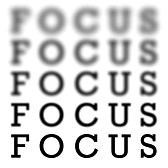 A Deeper Look into Nearsightedness
A Deeper Look into Nearsightedness
Nearsightedness, also known as myopia, is a common eye condition that causes objects that are in close view to appear clear while objects that are far away to appear blurry. The condition develops over time and can progress gradually or rapidly but often begins during childhood. Nearsightedness is often hereditary and often to run in families but rarely develops in adulthood.
Symptoms
Some of the most common symptoms that are related to nearsightedness include headaches due to eyestrain, squinting on a frequent basis, difficulty seeing objects while driving at night, and excessive blinking due to a local of visibility. Those who think that they are suffering from nearsightedness can participate in a basic eye exam at a local optometrist to determine the quality of their vision. Several treatment options are available for the eye condition and include getting glasses or contact lenses. Others who want a permanent solution can opt for LASIK eye surgery to correct the issue. LASIK eye surgery will restore the vision by removing the tissue that is present under the cornea. Regular eye exams will also be necessary to determine if the vision of the child or adult has changed and if any eye diseases are detected. A new prescription will then be necessary if the vision has improved or declined.
Is Being Nearsighted an Epidemic?
Nearsightedness is experienced by a significant portion of the population and continues to increase. Many health professionals now consider it an epidemic that has become more of an issue in the last 30 years due to an increase in the use of electronics. From laptops to iPads, more people are relying on the use of their electronic devices to communicate, research, and be entertained. This causes more people to spend less time focusing on objects that are far away. Children as young as four years of age are now suffering from nearsightedness due to more time spent indoors than playing or exploring outside. This is causing the eye to become more of an egg shape than a typical spherical, which is commonly linked to eye diseases to develop, which include cataracts, retinal detachment and glaucoma.
How Parents Can Prevent Nearsightedness in Children
While parents can’t entirely prevent it, they can prolong nearsightedness in their kid with a few proven steps that are effective for the child’s eye health. Atropine eye drops can be given to the individual to control myopia that may have already developed. Reducing eye strain with multifocal glasses will also allow the eye to function well. Orthokeratology is another alternative and are known as gas permeable contact lenses that are worn at night. They are extremely effective at correcting nearsightedness and will prevent having to wear glasses during the day.
Eye experts recommend taking a break from staring at computer or iPad screens every 20 minutes by looking into the distance for several seconds. Fortunately, myopia can be detected early on to prevent its progression and avoid habits that can strain the eyes throughout the day. Routine eye exams should be scheduled before preschool when the condition is most likely to begin to develop with proper eye focals worn.
